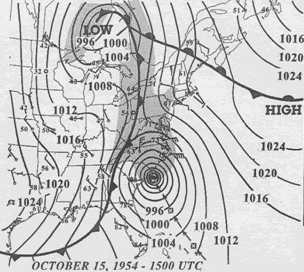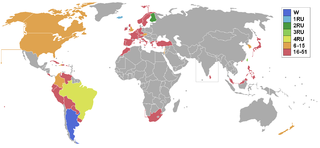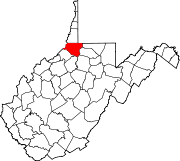
Culpeper County is a county located along the borderlands of the northern and central region of the Commonwealth of Virginia. As of the 2020 United States Census, the population was 52,552. Its county seat and only incorporated community is Culpeper.

Clarksburg is a city in and the county seat of Harrison County, West Virginia, United States, in the north-central region of the state. The population of the city was 16,039 at the 2020 census, making it the tenth-largest city in West Virginia. It is the principal city of the Clarksburg micropolitan area, which had a population of 90,434 in 2020. Clarksburg was named National Small City of the Year in 2011 by the National League of Cities.

Morgantown is a city in and the county seat of Monongalia County, West Virginia, United States, situated along the Monongahela River. The largest city in North Central West Virginia and the third-largest city in the state, Morgantown is best known as the home of West Virginia University. The population was 30,347 at the 2020 census. The city serves as the anchor of the Morgantown metropolitan area, which had a population of 138,176 in 2020.

Hurricane Hazel was the deadliest, second-costliest, and most intense hurricane of the 1954 Atlantic hurricane season. The storm killed at least 469 people in Haiti before it struck the United States near the border between North and South Carolina as a Category 4 hurricane. After causing 95 fatalities in the US, Hazel struck Canada as an extratropical storm, which raised the death toll by 81 people, mostly in Toronto. As a result of the high death toll and the damage caused by Hazel, its name was retired from use for North Atlantic hurricanes.
Hazel is a genus of nut-bearing trees and shrubs, including common hazel.

Hazel Jane Dickens was an American bluegrass singer, songwriter, double bassist and guitarist. Her music was characterized not only by her high, lonesome singing style, but also by her provocative pro-union, feminist songs. Cultural blogger John Pietaro noted that "Dickens didn’t just sing the anthems of labor, she lived them and her place on many a picket line, staring down gunfire and goon squads, embedded her into the cause." The New York Times extolled her as "a clarion-voiced advocate for coal miners and working people and a pioneer among women in bluegrass music." With Alice Gerrard, Dickens was one of the first women to record a bluegrass album.

The Hazel-Atlas Glass Company was a large producer of machine-molded glass containers headquartered in Wheeling, West Virginia. It was founded in 1902 in Washington, Pennsylvania, as the merger of four companies:

Hazel Virginia Hotchkiss Wightman, CBE was an American tennis player and founder of the Wightman Cup, an annual team competition for British and American women. She dominated American women's tennis before World War I, and won 45 U.S. titles during her life.
The Rock Boat is an annual rock music-themed "floating music festival at sea" aboard a cruise ship. It takes place in different locations each cruise, with several dozen bands performing in each cruise.

The Hazel River is a 47.8-mile-long (76.9 km) tributary of the Rappahannock River in northern Virginia in the United States. Via the Rappahannock, it is part of the Chesapeake Bay watershed. It rises in Shenandoah National Park and flows generally eastwardly through Rappahannock and Culpeper counties. It joins the Rappahannock River from the west about 3 miles (5 km) northwest of Remington. The Hazel's largest tributaries are the Hughes River, which joins it at the border of Rappahannock and Culpeper counties, and the Thornton River, which joins it in Culpeper County.

State Route 229 is a primary state highway in the U.S. state of Virginia. Known for most of its length as Rixeyville Road, the state highway runs 14.66 miles (23.59 km) from U.S. Route 15 Business and US 29 Business in Culpeper north to US 211 near Waterloo. SR 229 connects Culpeper with Catalpa and Rixeyville in northern Culpeper County.
Peace Out of Pain is the thirteenth and final episode of the fourth series of the period drama Upstairs, Downstairs. It first aired on 7 December 1974 on ITV.
Billy Edward "Edd" Wheeler is an American songwriter, performer, writer, and visual artist.

The Sinks of Gandy — also called the Sinks of Gandy Creek, or simply "The Sinks" — are a modestly celebrated cave and underground stream at Osceola in eastern Randolph County, West Virginia, United States. The Sinks are on private property within the Monongahela National Forest.

Miss Universe 1962, the 11th Miss Universe pageant, was held on 14 July 1962 at the Miami Beach Auditorium in Miami Beach, Florida, United States. Norma Nolan of Argentina was crowned by her predecessor Marlene Schmidt of Germany. The Best National Costume were awarded for the first time.

East Wheeling Historic District is a national historic district located at Wheeling, Ohio County, West Virginia. The district encompasses 300 contributing buildings and one contributing site, including the Monroe Street East Historic District. The district is primarily residential, developed in the late-19th and early-20th century. A number of popular architectural styles are represented including Greek Revival and Gothic Revival. Notable non-residential buildings include St. Joseph Cathedral (1926), former Hazel Atlas Company building, Scottish Rite Temple designed by noted Wheeling architect Frederick F. Faris (1870-1927), Elks Building, and YMCA (1906), also designed by Faris. The contributing site is Elk Playground. Also located in the district are the separately listed L. S. Good House, Charles W. Russell House, and Cathedral Parish School.
The city of Baltimore, Maryland includes a significant Appalachian population. The Appalachian community has historically been centered in the neighborhoods of Hampden, Pigtown, Remington, Woodberry, Lower Charles Village, Highlandtown, and Druid Hill Park, as well as the Baltimore inner suburbs of Dundalk, Essex, and Middle River. The culture of Baltimore has been profoundly influenced by Appalachian culture, dialect, folk traditions, and music. People of Appalachian heritage may be of any race or religion. Most Appalachian people in Baltimore are white or African-American, though some are Native American or from other ethnic backgrounds. White Appalachian people in Baltimore are typically descendants of early English, Irish, Scottish, Scotch-Irish, and Welsh settlers. A migration of White Southerners from Appalachia occurred from the 1920s to the 1960s, alongside a large-scale migration of African-Americans from the Deep South and migration of Native Americans from the Southeast such as the Lumbee and the Cherokee. These out-migrations caused the heritage of Baltimore to be deeply influenced by Appalachian and Southern cultures.

J.W. Ruby Memorial Hospital is the flagship hospital of the West Virginia University Health System, located in Morgantown, West Virginia. A 690-bed tertiary care center, Ruby is also the largest hospital in the health system and serves as the academic medical center of the West Virginia University School of Medicine.
The nonprofit West Virginia Music Hall of Fame was established in 2005, to honor the legacies of the state's performing artists in multiple music genres. This hall of fame is the brainchild of its founder, musician Michael Lipton, who was inspired by a visit to the Country Music Hall of Fame and Museum in Nashville, Tennessee. The first exhibit was records from his personal collection.















